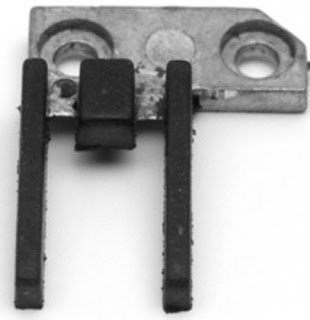Singer 645
Back in the middle of the 600 Series Touch & Sews, Singer decided that rubber-coated feed dogs would be a good idea. They would feed even the finest of fabrics without snagging or leaving marks on the fabric.
Unfortunately, Singer forgot that rubber and sewing machine oil don’t play well together and the rubber coating on the feed dogs softens and crumbles off. When that happens, fabric will not feed and the machine will not sew.
A couple of weeks ago, a friend asked me to look at a 645 that she picked up at a thrift shop. The first thing I saw was that the rubber had melted and was all out of shape.
Before investing $20 in a new feed dog, I looked at the internal gears. This series not only has a rubber feed dog, but plastic internal gears, also. All the plastic gears appeared to have been replaced because they were all black. The original gears were white and turn yellow/brown with age just before they crumble and break. Someone had spent a good deal of money having those gears replaced and I have not yet seen a black replacement gear crack or break. The machine ran quiet and smooth, so I decided it was worth the money to replace the feed dog.
Rubber-coated feed dogs are available but there is another option. After a few years, Singer realized that rubber-coated feed dogs were a mistake and went back to metal feed dogs with teeth. Those feed dogs from later model 600 series Touch & Sews fit perfectly where the rubber feed dogs were.
Just pop off the throat plate, remove the two screws holding the feed dog and lift off the feed dog. Set the new piece in place, replace the two screws and reinstall the throat plate. Takes less than 15 minutes. The metal feed dogs are about $2 cheaper but I happened to have one in the parts bin from a machine with cracked gears that I had parted out.
After seeing this machine, I am re-thinking the plastic gear issue and might try replacing a full set myself next time I run into a 600 series Touch & Sew that needs re-gearing.














